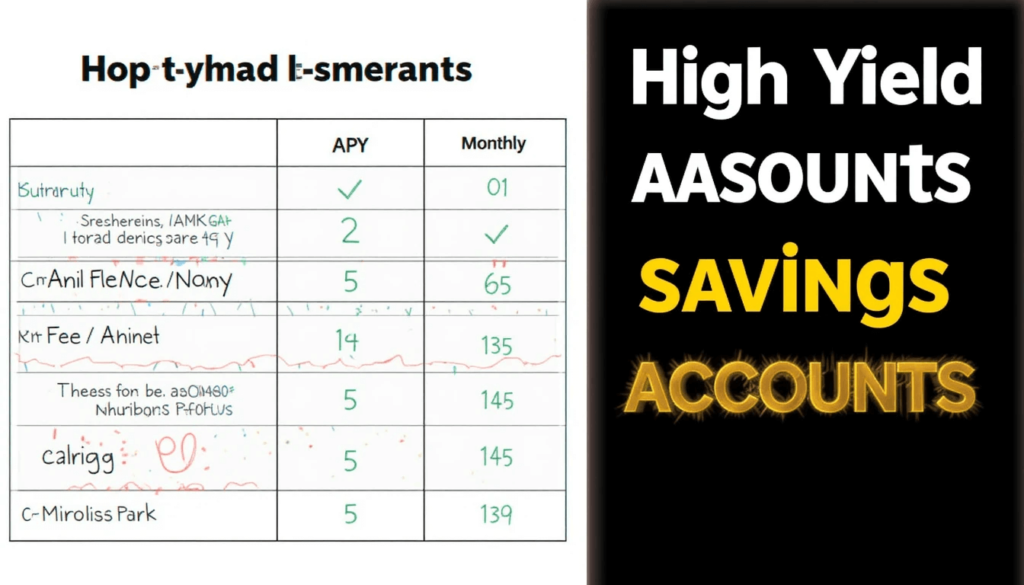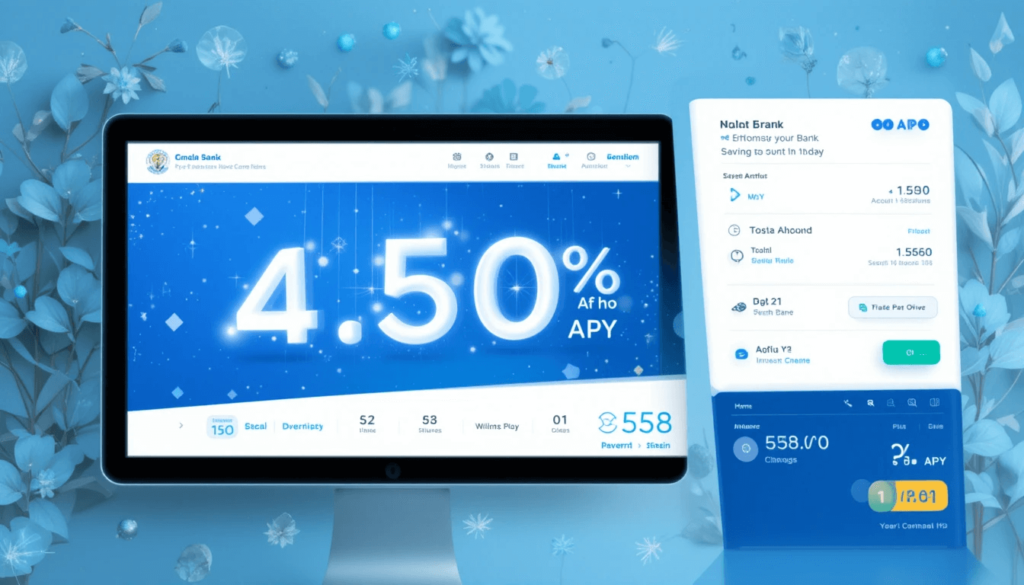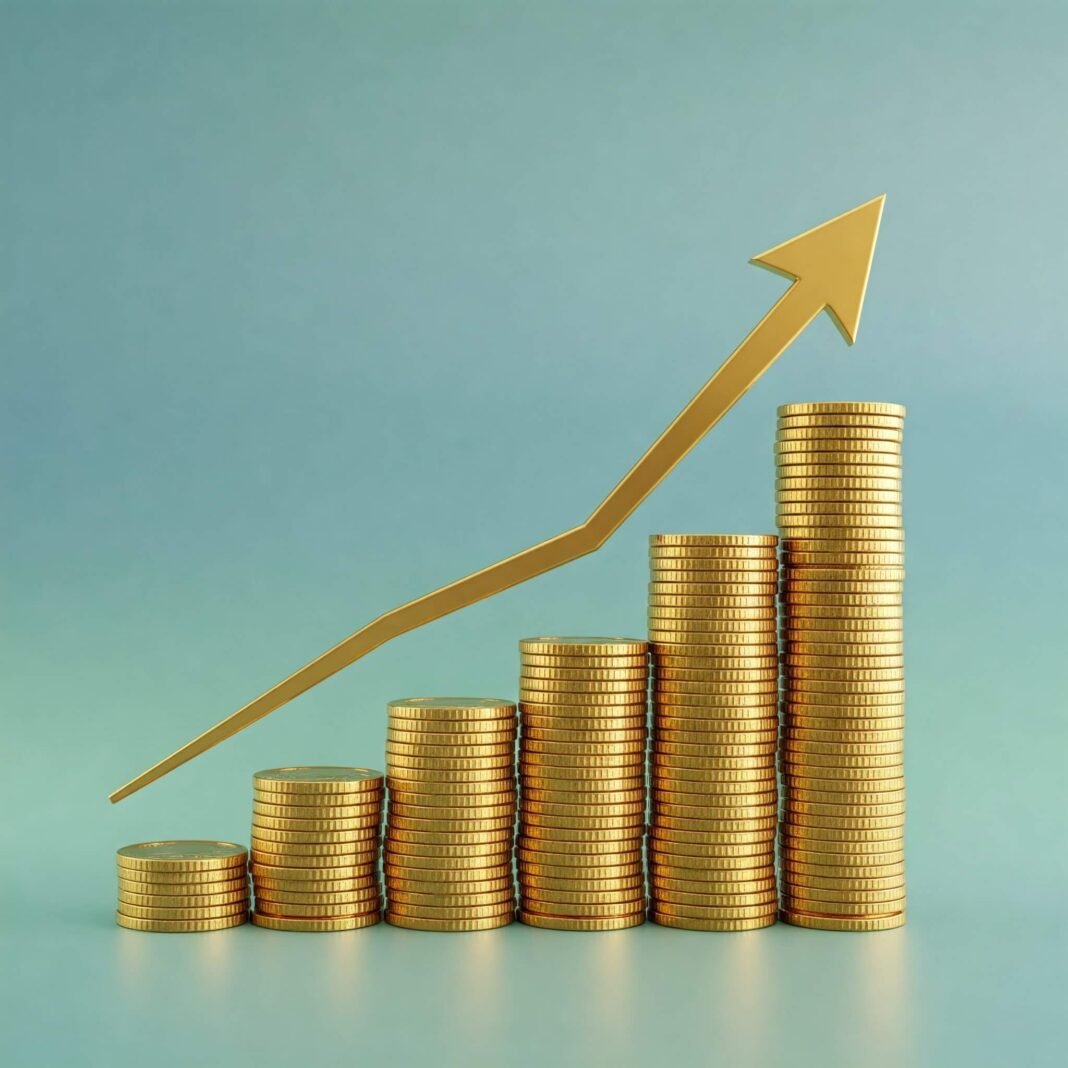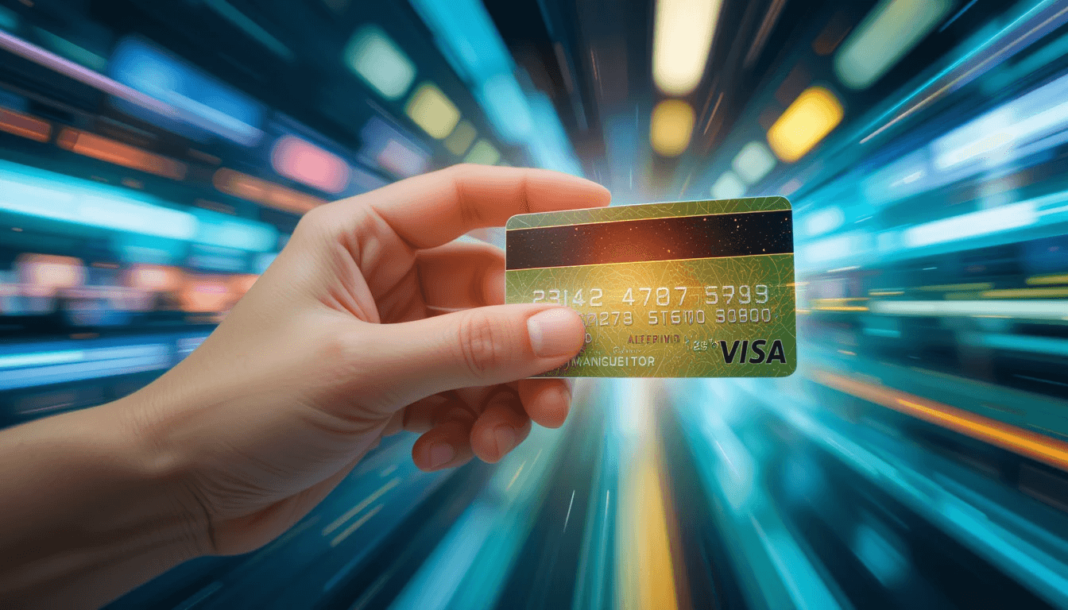Maybe it’s your emergency fund (good for you!), maybe it’s for a down payment on a house (dreams!), or maybe it’s just your “future self” fund. Whatever it is, it’s probably chilling in a regular old savings account at your local brick-and-mortar bank. And those banks? They’re giving you, like, 0.01% interest. Meaning, for every $1,000 you have, you’re making a dime a year. A dime. You could find more money on the street, probably.
My friend, Dave, used to joke that his savings account was so low-yield, he was practically paying them to hold his money. “Dude, I seriously thought all savings accounts were basically the same!” he said, looking forlornly at his banking app. Then one day, his coworker mentioned a “high-yield” account. Dave, being Dave, immediately got suspicious. “Is it a scam? Is it too good to be true?” Turns out, it wasn’t. And that’s the beauty of High-Yield Savings Accounts. They’re regular savings accounts, usually online, that pay significantly higher interest rates than those old-school banks. We’re talking percentages, not decimals. For real.

Now, before we get into my totally unofficial, completely subjective, but also pretty good guide for finding the Best High-Yield Savings Accounts for 2025, a few disclaimers because I’m not a financial advisor (I just play one on the internet, sometimes messy, sometimes brilliant):
- Rates Change! Interest rates on these accounts are variable. They can go up, they can go down. What’s “best” today might not be “best” tomorrow. Always, always check the current APY (Annual Percentage Yield) on the bank’s official website.
- FDIC Insured! This is non-negotiable. Make sure any bank you consider is FDIC insured. This means your money (up to $250,000 per depositor, per institution) is safe, even if the bank goes belly-up. It’s like a financial superhero cape for your cash.
- No, This Isn’t an Investment Account. This is for savings. It’s not a stock market account where your money can swing wildly. It’s safe, stable, and liquid (meaning you can get your money out when you need it).
Okay, deep breath. Let’s talk about making your money work harder than you do on a Monday morning.
What Even IS a High-Yield Savings Account? (And Why You Need One, Like, Yesterday)
Basically, a High-Yield Savings Account is a savings account that pays you more interest. A lot more. While your local bank branch might give you 0.05% APY, an online high-yield account might give you 4.5% APY (as of recent rates, but remember, these fluctuate!). That’s literally hundreds of times more interest.
- Why the difference? Traditional banks have huge overheads – all those marble counters, ATMs everywhere, tellers, lollipops. Online banks don’t have that. They pass those savings on to you in the form of higher interest rates. Simple as that!
- Why bother? Let’s say you have $10,000.
- At 0.05% APY, you make $5 a year. Whoop-dee-doo.
- At 4.5% APY, you make $450 a year. Just for keeping your money in a different spot. That’s a whole new gadget! Or a nice dinner out! Or, you know, extra savings. This is the power of compounding interest, baby! It’s like planting a tiny money tree that actually grows.
Your Guide to the Best High-Yield Savings Accounts for 2025 (Types of Banks to Consider)
Since I can’t give you a definitive “best” list for 2025 right now (time travel, sadly, is not one of my current capabilities), I can tell you what types of banks consistently offer the best rates and features, and what to look for when you’re shopping around. Think of this as your scouting report for finding your own perfect money nest.
1. The Online-Only Powerhouses (Often the Highest APYs)
- Why they’re great: These are your go-to for top-tier interest rates. Because they don’t have physical branches, their operating costs are super low, and they pass those savings onto you.
- What to look for: Look for competitive APYs (duh!), no monthly maintenance fees (most don’t have them), and no minimum balance requirements (or very low ones). Easy online transfers to/from your checking account are also key.
- Who it’s good for: Everyone, honestly. Especially if you’re comfortable doing your banking online. This is where most people get their first taste of real interest earnings.
- My take: This is where I finally moved my money. I felt like such a genius, even though it was so simple. It’s like finding a secret menu at your favorite restaurant, but instead of extra fries, it’s extra money.
2. The Community-Focused Champions: Credit Unions
- Why they’re great: Credit unions are not-for-profit, member-owned institutions. This often means they can pass on better rates and lower fees to their members. They also tend to have fantastic customer service.
- What to look for: Competitive rates (they might not always be the absolute highest, but they’re usually very good), community ties, and often a more personalized banking experience. You might need to meet specific eligibility requirements to join (e.g., live in a certain area, work for a certain company, or sometimes just make a small donation to an associated charity).
- Who it’s good for: People who value a more personal touch, want to support a local institution, or are part of a specific community that has a credit union.
- My take: My aunt, bless her heart, refuses to bank anywhere but her local credit union. “Dude, I seriously thought only big banks were safe until I joined!” she told me. She loves the personal service and the fact that she knows her money is helping local folks.
3. The Tech-Forward Innovators: Hybrid/Challenger Banks
- Why they’re great: These are usually online-only banks or fintech companies that are pushing the boundaries with slick apps, innovative features, and sometimes even higher-than-average APYs to attract new customers. They might offer cool budgeting tools, early direct deposit, or other integrated features.
- What to look for: Look for FDIC insurance (super important, as some are fintech companies that partner with FDIC-insured banks), transparent fee structures, and features that truly benefit you.
- Who it’s good for: Tech-savvy individuals who want a modern banking experience, or those looking for more integrated financial tools.
- My take: I dabbled with one of these for a bit. The app was gorgeous. It tracked my spending, made suggestions. It felt like I had a tiny financial assistant in my pocket. But always double-check the FDIC part – sometimes it’s through a partner bank, which is fine, but you gotta know.
4. The “No Fees, Please!” Zone: Banks with Minimal Requirements
- Why they’re great: Some high-yield accounts require minimum balances or charge monthly fees if you dip below a certain threshold. But many offer high APYs with no monthly fees, no minimum deposit to open, and no minimum balance requirements.
- What to look for: Exactly that – zero fees, zero minimums. It’s like finding a unicorn that also gives you free money.
- Who it’s good for: Everyone, but especially those just starting to build their savings, or who might have fluctuating balances. You don’t want your hard-earned interest eaten by fees.
- My take: Fees are the silent killers of savings. Seriously. I once had a checking account that charged me $12 a month because I didn’t keep $1,500 in it. I was losing money just by having an account! Always, always check the fee schedule.

What to Watch Out For When Picking Your High-Yield Savings Accounts
It’s not all sunshine and rainbows, though. There are a few things that can trip you up.
- Introductory Rates: Some banks offer a super high APY for the first few months, then it drops. Always check the ongoing rate, not just the intro offer. It’s like a free trial that suddenly hits you with a massive bill.
- Tiered APYs: Some accounts offer different rates based on your balance. For example, 5.0% APY for balances under $10,000, but only 0.5% APY for balances over $10,000. Make sure your balance aligns with the top tier you’re aiming for.
- Withdrawal Limits: Savings accounts (by federal regulation, Regulation D, though it’s been suspended/modified at times) typically limit you to 6 “convenient” withdrawals or transfers per month. If you exceed that, you might pay a fee or even have your account converted to a checking account. This is why it’s for savings, not your everyday spending.
- Customer Service: Since they’re mostly online, how do you get help? Read reviews about their customer service. Can you call them? Chat online?
- Mobile App/Online Experience: If you’re going to bank online, the app and website need to be user-friendly and functional. No clunky interfaces, please.
My Own Savings Journey: From Zero to Hero (Okay, Not Hero, But Better!)
I remember the day I finally moved my emergency fund out of my big bank’s sad little savings account. I had about $5,000 in there. I’d heard about high-yield accounts, but it felt like too much work. “Just do it!” my inner voice yelled. It took like, 15 minutes to open the online account and link it. Then, a few days for the money to transfer. And then? The magic started.
A month later, I got my first interest payment. It was like, $18. Eighteen dollars! My old bank would have given me maybe 20 cents. I showed my spouse. “Eighteen dollars!” I exclaimed, doing a little happy dance. They looked at me and said, “You seriously thought that was exciting?” It was. It really was. It was concrete proof that my money was actually doing something for me. I should probably be embarrassed by how excited I got over $18, but honestly? That’s one of my favorite financial memories. It really clicked for me how powerful even small amounts can be when they’re compounding.

Conclusion: Don’t Let Your Money Nap!
Look, it’s 2025. Your money shouldn’t be sleeping. It should be working hard for you, earning as much interest as possible, especially for your emergency fund or short-term goals. The Best High-Yield Savings Accounts for 2025 are out there, waiting for your dollars to come make some friends and multiply.
It’s not complicated, not risky (as long as it’s FDIC insured!) and just a smarter way to save. So, go forth, compare those APYs, check those fees, and make that move. Your future self, with a slightly fatter savings account, will thank you for it. Cheers to smarter saving and ditching those sad little dime-a-year accounts!





